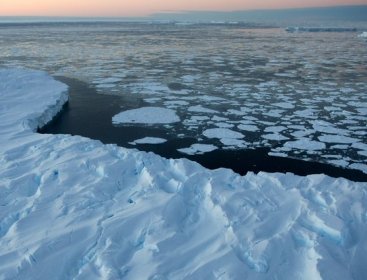U.S. scientists say they found metabolically active bacteria in the brine of an Antarctic lake sealed for thousands of years under more than 65 feet of ice.
Researchers at the University of Illinois at Chicago, writing in the Proceedings of the National Academy of Sciences, said the finding sheds light on the limits of life in extreme environments.
The brine has been isolated from the surface environment, and from any external sources of energy, for at least 2,800 years, they said.
"This provides us with new boundary conditions on the limits for life," researcher Peter Doran said. "The low temperature or high salinity on their own are limiting, but combined with an absence of solar energy or any new inputs from the atmosphere, they make this a very tough place to make a living."
The findings were unexpected because of the extremely salty, dark, cold, isolated ecosystem within the ice, scientists said.
The brine is oxygen-free, slightly acidic, and contains high levels of organic carbon and molecular hydrogen, the scientists said.
"Geochemical analyses suggest that chemical reactions between the brine and the underlying sediment generate nitrous oxide and molecular hydrogen," researcher Fabien Kenig said. "The hydrogen may provide some of the energy needed to support microbes." (UPI)
<관련 한글 기사>
남극 빙하에서 수천년 전 ‘고대생명’ 발견!
남극 빙하 밑에서 수천년전의 미생물이 발견되어 화제가 되고 있다.
미국 시카고의 일리노이 대학 연구진은 최근 국립 과학 아카데미 회보 (Researchers at the University of Illinois at Chicago)에 실린 연구를 통해 남극호수의 밑에서 수천년간 갇혀있던 미생물을 발견했으며, 이 미생물의 신진대사 활동이 아직 이뤄지고 있다고 밝혔다.
이 미생물이 수용되어 있던 곳은 최소한 지난 2,800년간 표면의 활동이나 외부 에너지원으로부터 격리되어 있었다고 한다. 이 곳은 산소가 전혀 없으며 약간 산성인데다 유기탄소와 분사수소가 다량으로 있다.
연구에 참여한 피터 도란은 이번 발견으로 인해 생명이 생존할 수 있는 한계점이 더욱 확장되었다고 설명했다.
연구진은 미생물이 발견된 빙하가 극도로 염분이 높고, 온도가 낮으며, 어둡고 외부로부터 완전히 격리된 생태계였기 때문에 생명을 발견할 것을 전혀 예상하지 못했다고 말했다. “저온과 높은 염분만으로도 (생존에) 어려움을 줍니다만 태양에너지가 완전히 부재하고 대기권에서의 유입이 전혀 없다는 요소가 더해지면, 살아남기 정말 어려운 환경이 되죠”라고 도란은 설명했다.
“지구화학적 분석 결과 (미생물이 발견된) 소금물 지역과 밑의 퇴적물 사이에서의 화학적 반응이 이산화질소와 분자수소를 생성한다는 사실이 밝혀졌습니다. 이 분자수소가 미생물의 생존을 가능하게 하는 에너지를 제공했을 가능성도 있습니다”라고 연구원 파비엔 케닉이 말했다. (코리아헤럴드)






![[From the Scene] Monks, Buddhists hail return of remains of Buddhas](http://res.heraldm.com/phpwas/restmb_idxmake.php?idx=644&simg=/content/image/2024/04/19/20240419050617_0.jpg&u=20240419175937)





![[Graphic News] French bulldog most popular breed in US, Maltese most popular in Korea](http://res.heraldm.com/phpwas/restmb_idxmake.php?idx=644&simg=/content/image/2024/04/18/20240418050864_0.gif&u=)


![[From the Scene] Monks, Buddhists hail return of remains of Buddhas](http://res.heraldm.com/phpwas/restmb_idxmake.php?idx=652&simg=/content/image/2024/04/19/20240419050617_0.jpg&u=20240419175937)

![[KH Explains] Hyundai's full hybrid edge to pay off amid slow transition to pure EVs](http://res.heraldm.com/phpwas/restmb_idxmake.php?idx=652&simg=/content/image/2024/04/18/20240418050645_0.jpg&u=20240419100350)

![[Today’s K-pop] Illit drops debut single remix](http://res.heraldm.com/phpwas/restmb_idxmake.php?idx=642&simg=/content/image/2024/04/19/20240419050612_0.jpg&u=)